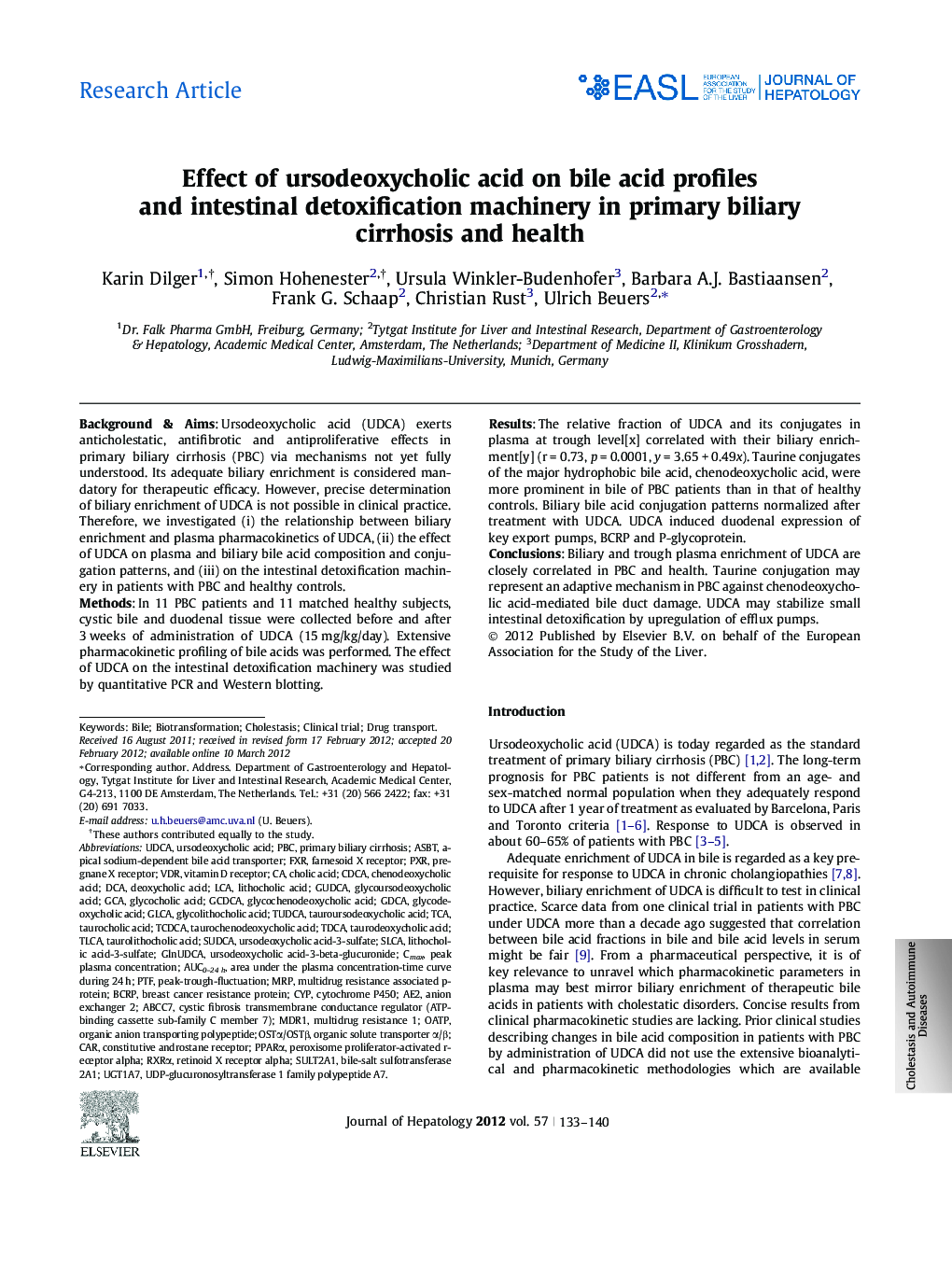| Article ID | Journal | Published Year | Pages | File Type |
|---|---|---|---|---|
| 6106813 | Journal of Hepatology | 2012 | 8 Pages |
Background & AimsUrsodeoxycholic acid (UDCA) exerts anticholestatic, antifibrotic and antiproliferative effects in primary biliary cirrhosis (PBC) via mechanisms not yet fully understood. Its adequate biliary enrichment is considered mandatory for therapeutic efficacy. However, precise determination of biliary enrichment of UDCA is not possible in clinical practice. Therefore, we investigated (i) the relationship between biliary enrichment and plasma pharmacokinetics of UDCA, (ii) the effect of UDCA on plasma and biliary bile acid composition and conjugation patterns, and (iii) on the intestinal detoxification machinery in patients with PBC and healthy controls.MethodsIn 11 PBC patients and 11 matched healthy subjects, cystic bile and duodenal tissue were collected before and after 3 weeks of administration of UDCA (15 mg/kg/day). Extensive pharmacokinetic profiling of bile acids was performed. The effect of UDCA on the intestinal detoxification machinery was studied by quantitative PCR and Western blotting.ResultsThe relative fraction of UDCA and its conjugates in plasma at trough level[x] correlated with their biliary enrichment[y] (r = 0.73, p = 0.0001, y = 3.65 + 0.49x). Taurine conjugates of the major hydrophobic bile acid, chenodeoxycholic acid, were more prominent in bile of PBC patients than in that of healthy controls. Biliary bile acid conjugation patterns normalized after treatment with UDCA. UDCA induced duodenal expression of key export pumps, BCRP and P-glycoprotein.ConclusionsBiliary and trough plasma enrichment of UDCA are closely correlated in PBC and health. Taurine conjugation may represent an adaptive mechanism in PBC against chenodeoxycholic acid-mediated bile duct damage. UDCA may stabilize small intestinal detoxification by upregulation of efflux pumps.
